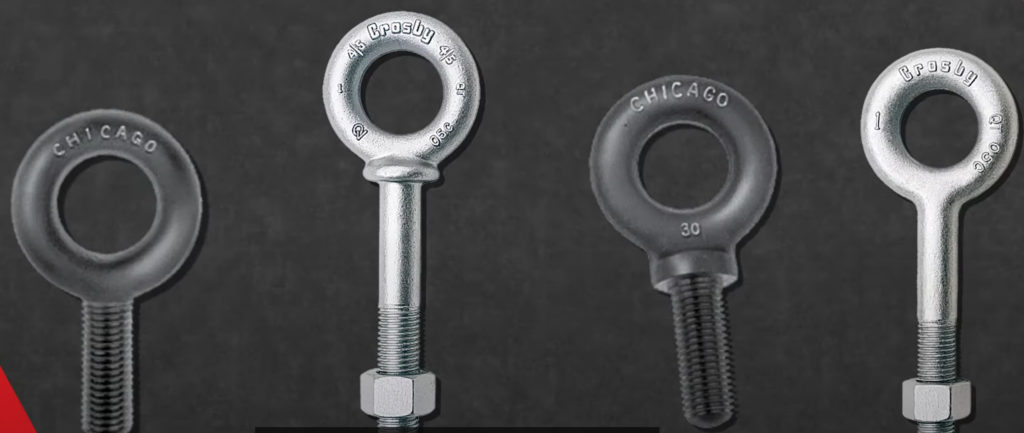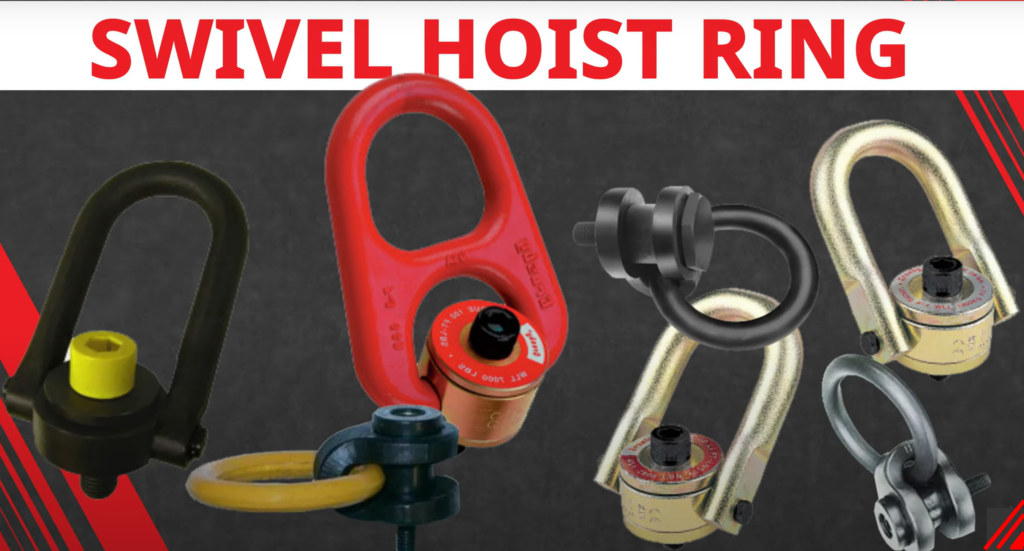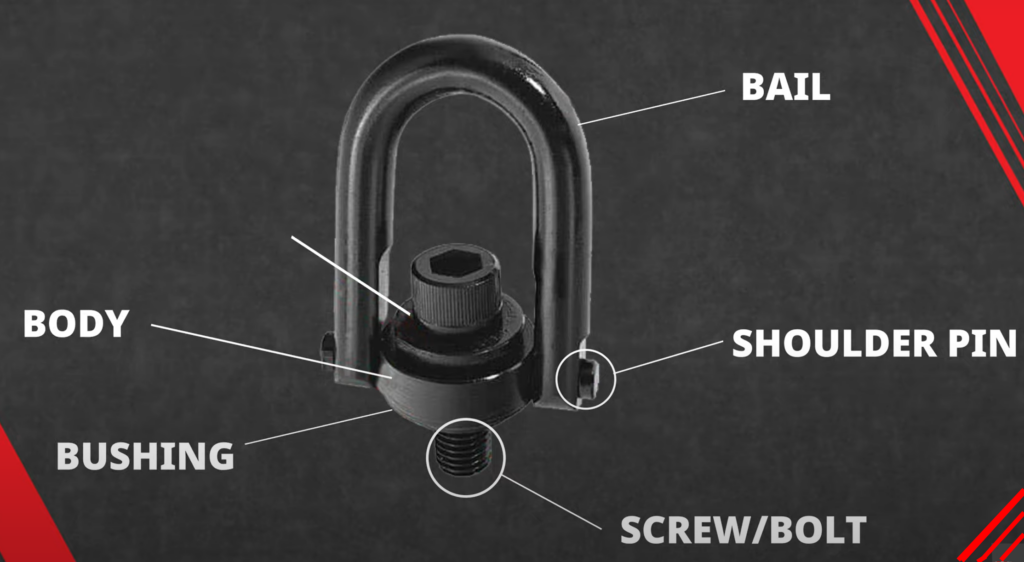What’s the difference between an eye bolt and a hoist ring, and what’s the use of them? Used as a lifting or securement point during a lift, eye bolt and hoist rings are the most common types of rigging hardware. Though eye bolts and hoist rings are sometimes for similar applications, they differ greatly when it comes to design capabilities and features. It’s not uncommon to see an eye bolt bent or cracked during a lift. Whereas a hoist ring could better accommodate the rigging and support the load.
What is an eye bolt?
Use as a lifting or securement point, eye bolts are one of the most popular types of rigging hardware. Just like slings, sling hooks, and shackles, eye bolts come in a number of designs and different configurations. Eye bolts can use as a connection point for rigging, anchoring, pulling or hoisting applications. They are stationary lifting points, and only certain types can accommodate angular lifts by factoring in a significant reduction to the WLL. The rated load of an eye bolt ranges anywhere from 200 pounds to 65000 pounds. Depending on the size and shape of the load, lifts may perform with the assistance of one or multiple eye bolts throughout the surface of the load.

Common Uses of Eye Bolts
Eye bolt can be use as a connection point for rigging, anchoring, pulling or hoisting applications. In many cases, the eye bolt is a permanent engineered lifting point, on a motor, container, or other industrial object. Eye bolts are best suitable to lifting these items with a straight in-line pull.
Eye Bolt Pros & Cons
Eye bolts are less expensive in comparison to hoist rings, and people often purchase them in bulk amounts. However, it’s not uncommon for eye bolts to use, abuse, and dispose of, as they are inexpensive and non-repairable. And because eye bolts are simple products, lacking moving parts. They are relatively easy to learn how to use and to visually inspect. Angular lifts on an eye bolt will significantly lower the working load limit and should avoide whenever possible. if an angular lift is require, a properly shoulder eye bolt must be use. It’s important to note that not all shoulder eye bolts are rate for angular lifting. Be sure to consult with the manufacturer before using an angular lift.
What is a Hoist Ring?
A hoist ring, sometimes refer to as a swivel eye bolt. It is a piece of rigging hardware that screws into an engineer lifting point on a load. The function of a hoist ring is similar to an eye bolt. However, a swivel hoist has the capability of pivoting or swiveling to accommodate lifting and angles without incurring damage to the device. Whereas eye bolts are stationary and can only accommodate angular lifts by factoring in a significant reduction to the WLL.

Hoist Ring Pros & Cons
Because hoist rings have more moving parts, they do come in at a higher cost than eye bolts. However, they tend to last longer and are usually repairable if damage. Learning to use and inspect these devices is more complicate. Hoist rings also require the use of an additional tool, a torque wrench to ensure they’re properly torqued into the load.
Parts of a Hoist Ring
Parts of a hoist ring include the bail, the shoulder pin, the screw bolt, the bushing, the body, and the washer. The rated load of a hoist ring ranges from anywhere between 800 pounds to 250000 pounds. Depending on the size and shape of the load, lifts may be perform with assistance of one or multiple hoist rings place throughout the surface of the load. Swivel hoist rings can pivot at 180 degrees or swivel at 360 degrees from the screws’ access to accommodate load movement while maintaining the working load limit.
Like eye bolts, hoist rings can be use as connection points for rigging, anchoring, pulling, or hoisting applications. People often use them to lift items like plates of steel, motors, dies, and containers. While hoist rings are often use to lift the same type of objects as eye bolts. They are best suitable for situations where angular lift is necessary. Hoist rings are also necessary to use in a lift, when an item is going to be flipped, turned, or manipulated in any other way than straight in-line lift.

Difference Between Eye Bolt and Hoist Ring
In summary, while both eye bolts and hoist rings are use for lifting purposes, hoist rings are generally prefer for heavier loads, provide swivel capabilities, and are design with higher safety factors. Eye bolts are simpler in design, have lower load capacities, and are suitable for lighter lifting applications. The choice between the two depends on the specific lifting requirements and load considerations.
At Kailipu, we offer various styles of high quality eye bolts and hoist rings. For any more help, e-mail our specialists at [email protected] for assistance.

